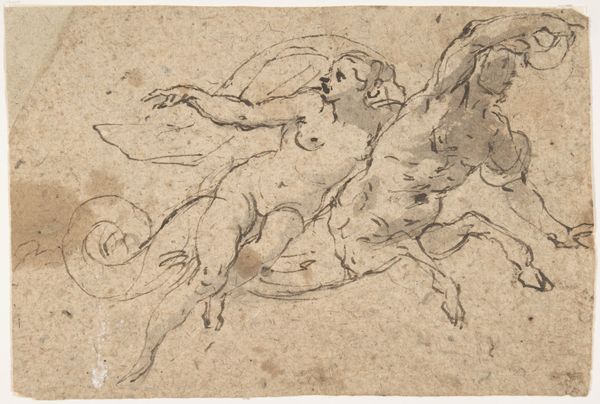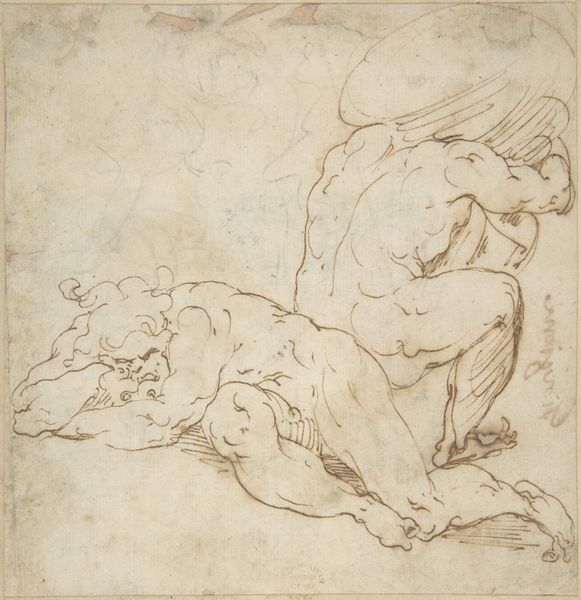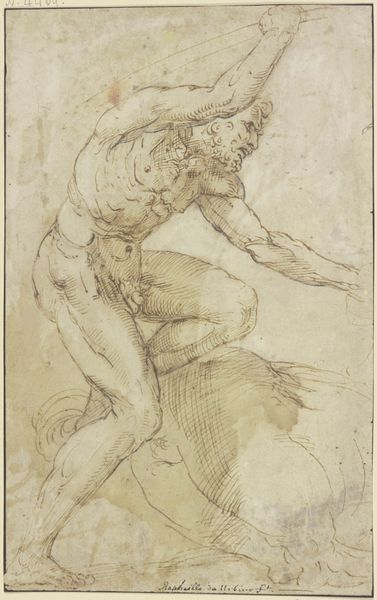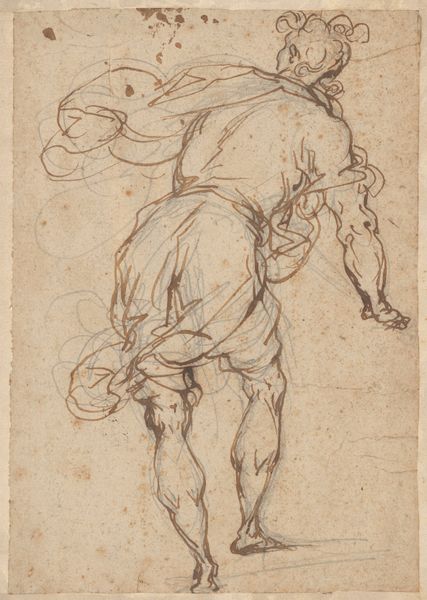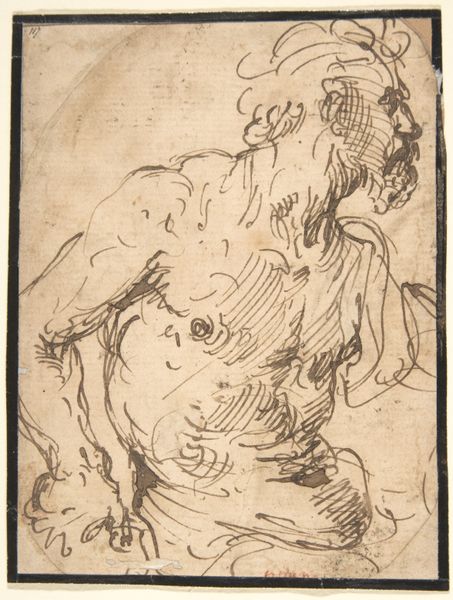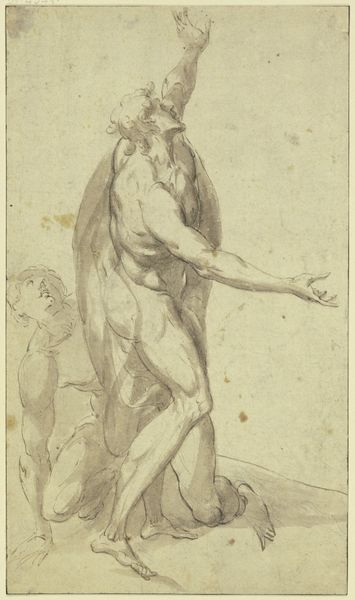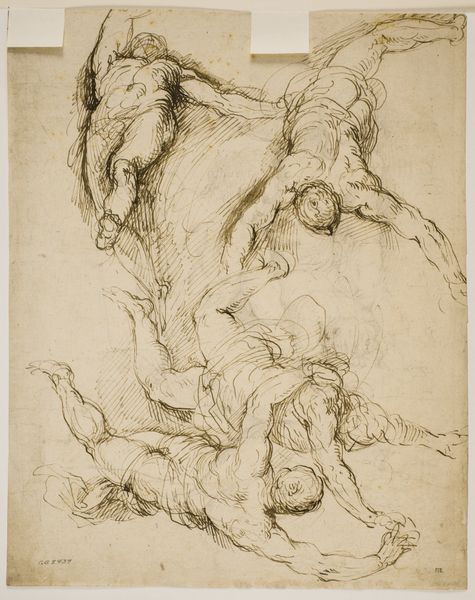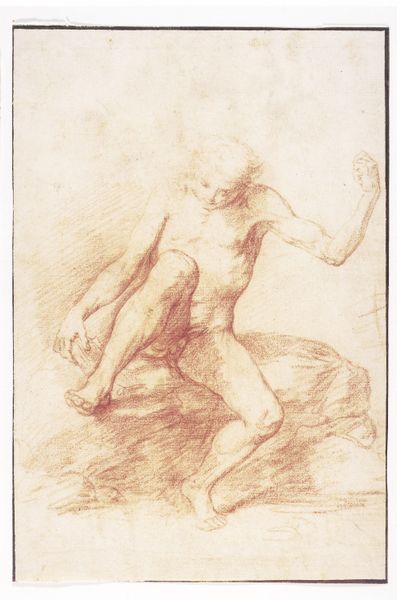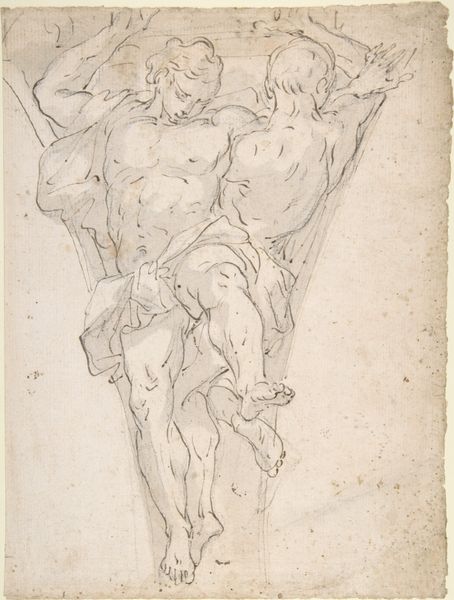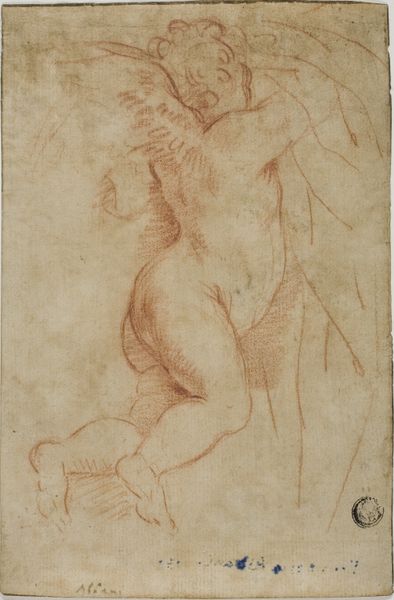
drawing, paper, ink, indian-ink, graphite
#
drawing
#
narrative-art
#
figuration
#
paper
#
ink
#
indian-ink
#
graphite
#
history-painting
Copyright: Public Domain
Curator: This drawing, held at the Städel Museum, is called "Two Gladiators," attributed to Cristoforo Roncalli. It’s executed in graphite, pen, and Indian ink on paper. There's something intensely visceral about it, don’t you think? Editor: Absolutely. The first thing that strikes me is the sheer violence captured in a few lines. It’s brutal and immediate, as if ripped from the heart of the arena. Curator: Consider the enduring symbolism of gladiatorial combat. The arena becomes a stage for power, dominance, but also sacrifice. The victor achieves glory, yes, but within a framework built on the suffering and death of others. Editor: Exactly! The Roman Empire constructed its power on this brutal spectacle. It acted as a political tool, managing social discontent. Think about the expression 'bread and circuses’ - a manipulative strategy ensuring compliance of the masses by satiating primal desires. Curator: The upward thrust of the gladiator's arm—sword raised—is so familiar. It echoes in countless depictions of triumphant heroes throughout art history, drawing upon the primal archetype of victory. The crowd in the coliseum would witness a controlled bloodletting that acted as a reflection and perhaps a temporary relief valve, from the social realities of injustice. Editor: And note how the vanquished gladiator becomes literally a stepping-stone. His body is not only defeated, it’s instrumentalized as part of the other’s ascension. A symbol of how systems of oppression often require the literal or figurative trampling of a certain group for the benefit of another. It still happens today. Curator: The image's power also lies in its immediacy and open form, as if inviting completion. We know its about sacrifice and survival, yet there is no final resolution, no conclusive outcome; it forces us to confront unresolved realities about the enduring aspects of aggression and violence within humanity. Editor: The fact that it's a drawing, an apparent sketch, also adds to the immediacy, but doesn’t distract us with a complete visual picture. The suggestive incompleteness allows viewers to focus on those very real struggles. Curator: Indeed, it captures the precarious nature of survival. I find myself questioning our attraction to violence. I ponder its function within society through this symbolic snapshot of humanity’s darker aspects. Editor: Right. This artwork presents us a reflection not just of a historical spectacle, but of power dynamics that unfortunately, are still very relevant in our own time.
Comments
No comments
Be the first to comment and join the conversation on the ultimate creative platform.
